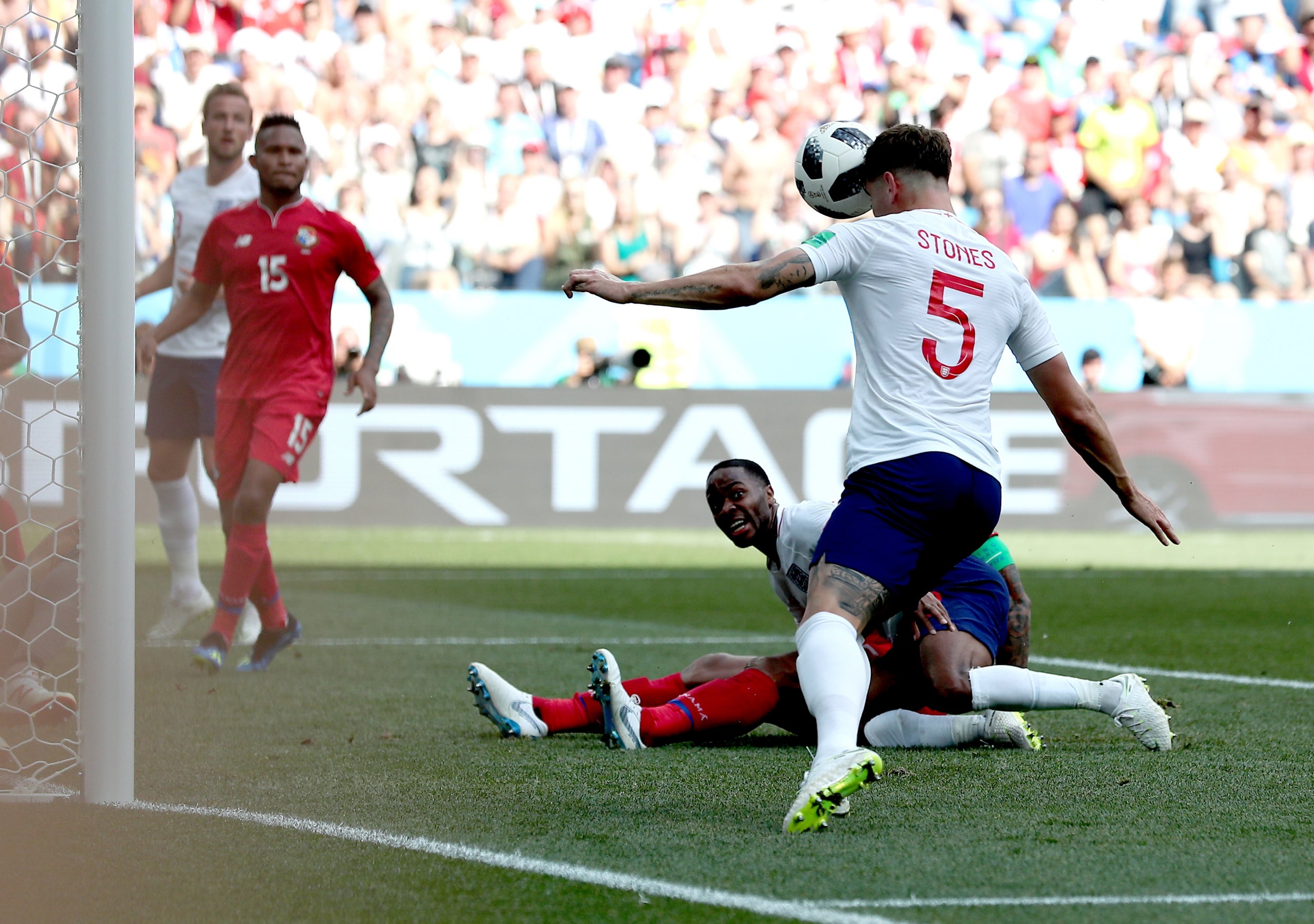England dominate set pieces as Gareth Southgate’s meticulous planning means he has seen everything coming
England have scored six of their eight goals from set pieces so far
John Stones is standing around 25 yards from goal. In front of him, the penalty area is already beginning to resemble Picasso’s Guernica, and the corner hasn’t even been delivered yet. Panamanian defenders and English attackers have their limbs wrapped around each other like dancers.
Stones would normally be in amongst them. Normally, he’s one of four England players who rush the goalmouth from corners; Harry Kane, Jordan Henderson and Harry Maguire are the others. It was how Stones was able to get a clear jump to set up England’s early goal against Tunisia, and Maguire to set up Kane’s winner in injury time. This was the scenario for which Panama will almost certainly have prepared. But this time, he stays away, stays on the fringes, observes the lay of the land from afar.
He’s not alone, of course. Panama have every man back defending, and even at this distance Stones has Michael Murillo of the New York Red Bulls for company. But Stones has three advantages that his team-mates in the melee don’t: space, time, and a clear eyeline. As the corner comes in, Stones gives Murillo a little feint to the left, a sweep to the right, and he’s away: meeting the ball entirely unmarked to give England a crucial 1-0 lead.
It might seem strange, on the day of one of the greatest wins in England’s World Cup history (seriously, it’s been that bad; Trinidad and Tobago just got knocked out of the top 10), to home in on just one part of it. But in a way Stones’ goal, the first and most important of England’s six, scored long before England’s uphill slog had turned into a deranged joyride, encapsulated the way Gareth Southgate’s side are succeeding at one of the hardest tricks to master in international football: staying a step ahead of the game, rather than reacting to it.
Southgate’s relentless focus on set-piece routines, a natural area of concentration given the short amount of practice time available and the huge potential dividend, has been borne out by a tournament in which more than half of goals have come from set plays. Plenty of teams talk about taking set pieces seriously: Southgate has drilled England, again and again, not just with a Plan A but with a B and C and probably plenty more besides.
Witness, too, the delightful free-kick routine that led to Stones’ second goal: Henderson coming short, wrong-footed Panama defenders rushing out to track him, Kane ghosting towards the back post to set up the finish. It was an ingenious piece of work, and the sort of thing that only results from imagination, dedication and the courage to keep hammering away at it instead of, say, another shooting drill, or some shadow play. On the same topic, England’s occasional frailty at defensive set pieces here, culminating in Felipe Baloy’s late consolation goal, will have disappointed Southgate, and is a weakness better teams will try to pinpoint.

Really, though, set pieces are just one part of the puzzle here. Iceland’s manager Heimir Hallgrimsson once told me that 95 per cent of his job is done before the players arrive, and in many ways England’s success on the pitch so far in Russia is the product of months of meticulous preparation, in the cold dark months of winter, long hours slaving over chalkboards and Excel spreadsheets.
And the familiar refrain we hear at every tournament that England are the “best-prepared” side ever to leave our shores may just hold true this time. An impressive and painstaking attention to detail that has gone into this entire enterprise, from putting photographs of the players’ families up in the medical room to make them feel at home, to sending the team chef to the Nizhny Novgorod hotel ahead of the squad so they would have something bespoke to eat on arrival.
At every turn, England have tried to steal a march. Tactically, Southgate’s three-man defence seemed a little out of sync when it was first introduced, but has correctly anticipated some of the major trends of this World Cup: the low blocks, teams defending with five or even six men strung across the pitch, the importance of preventing transitions. The “leaked” teamsheet that most of the assembled English press corps gleefully lathered themselves over on Thursday morning wasn’t even the right team-sheet. In fact, pretty much the only thing Southgate hasn’t seen coming so far was the step he tripped over while running, dislocating his shoulder.
Something strange is happening here. On a sweltering day in the very heart of Russia, England left the pitch with barely a bead of sweat on their brows. In the most high-pressure environment any footballer will face, a fixture with apparently everything to lose and nothing to gain, England despatched their opponents with a joy and a ruthlessness and freedom of expression that England World Cup teams are simply not supposed to have. For long-time followers of the national side, all this seems faintly unnerving. What happens next? Southgate, you sense, is already working on that one.
Join our commenting forum
Join thought-provoking conversations, follow other Independent readers and see their replies
Comments
Bookmark popover
Removed from bookmarks